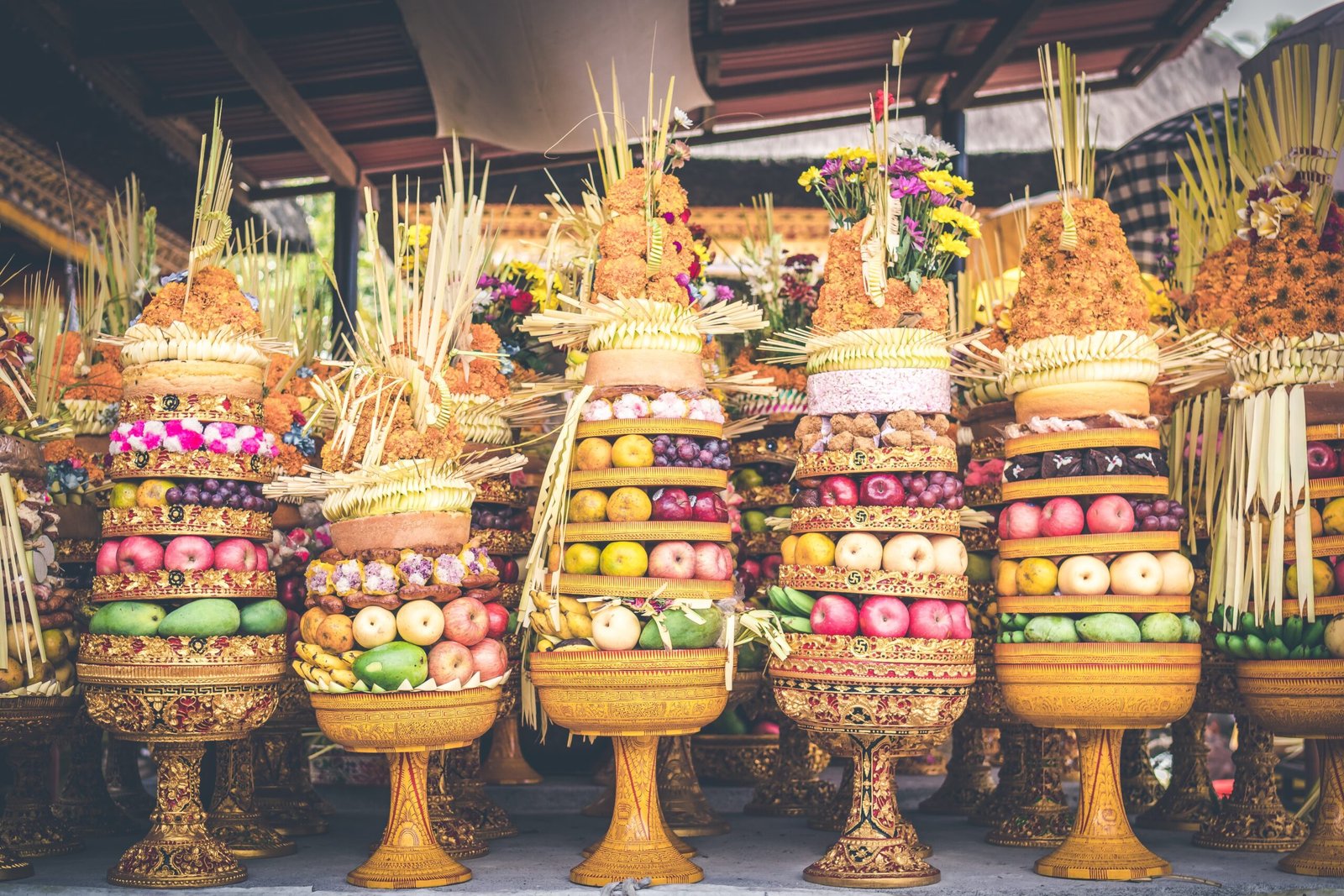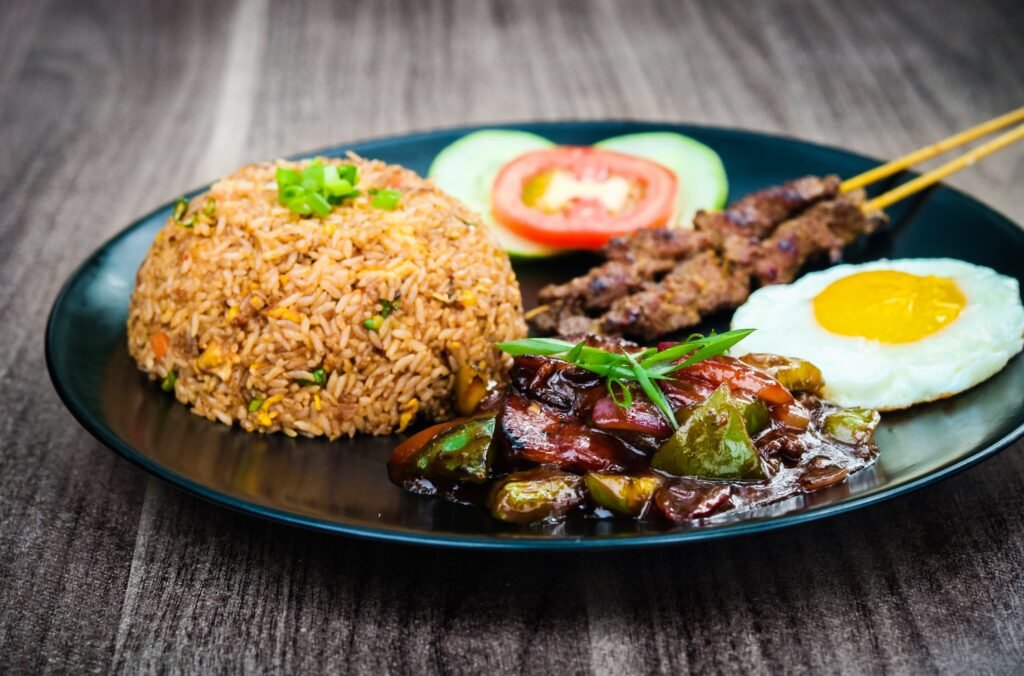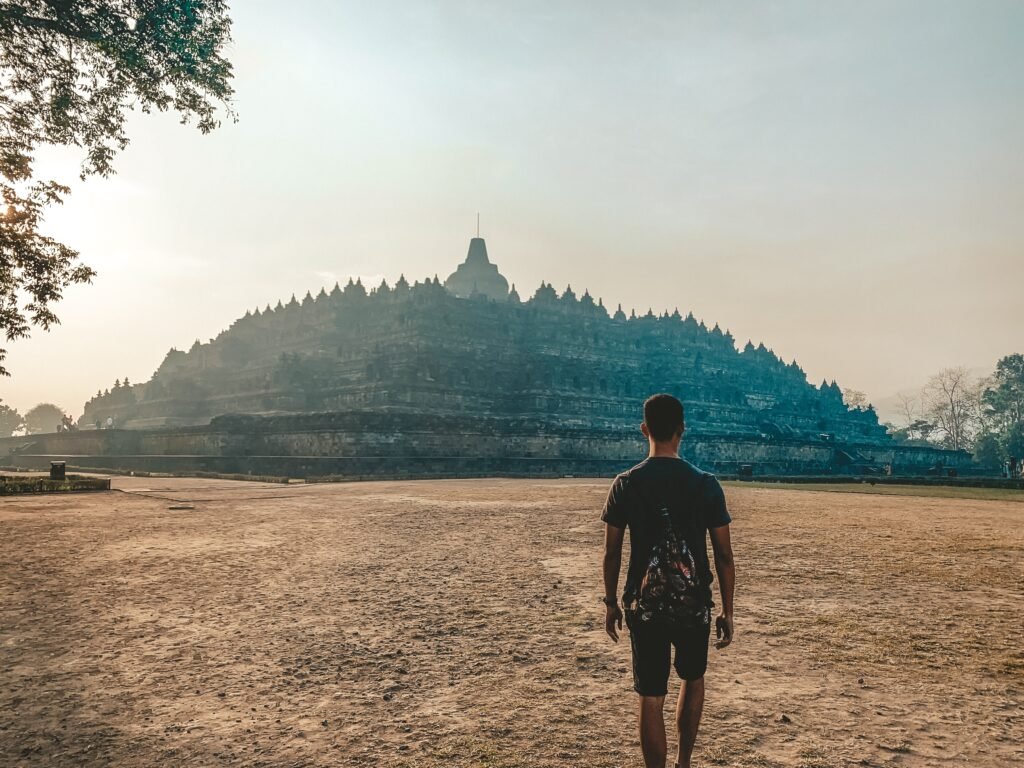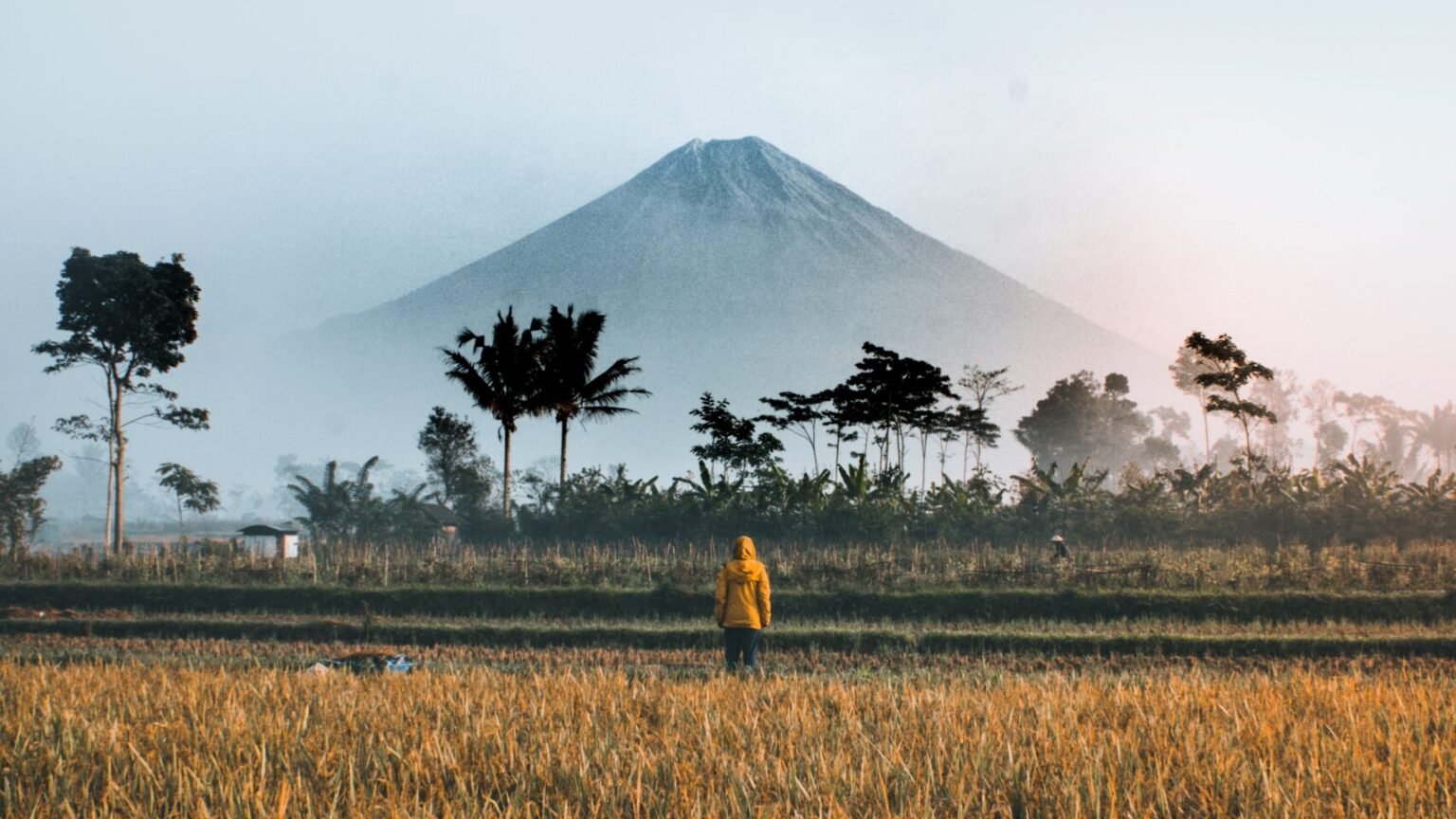Introduction
Welcome to our exploration of breathtakingly diverse, enchanting Indonesia.
Overview of Indonesia’s Cultural Diversity
With a staggering range of ethnic groups, each with its own customs and traditions, Indonesia is a fascinating cultural melting pot. The cultural tapestry of this nation is woven with influences from over 300 ethnic groups, and over 700 different languages spoken. Some essential aspects of Indonesia’s cultural diversity lie in its:
– Traditional Arts: Expressions of culture in Indonesia take many forms such as the intricate patterns of Batik, to the soul-stirring movements in Balinese dances.
– Local Cuisine: Each island has its unique flavors and ingredients, with dishes ranging from spicy Rendang to sweet Pisang Goreng.
Importance of Exploring and Appreciating Different Cultures
Appreciating Indonesia’s cultural diversity provides a richer, more nuanced perspective of this incredible country. Recognizing and understanding these unique cultural aspects helps bridge cultural gaps, encourage mutual respect, and foster global compassion. As we delve into the myriad of Indonesia’s awe-inspiring culture, one can only marvel at the splendid diversity that shapes this remarkable archipelago.
1. Traditional Arts of Indonesia
From magical folk dances to exquisite crafts, Indonesian culture sure knows how to capture hearts. Let’s dive straight into it.

Traditional dances
The essence of Indonesian culture and tradition can be beautifully traced in the elegance of its traditional dances. Every one of the country’s 300 ethnic groups has its unique dance forms, each narrating a different folklore or tradition.
Explanation of various regional dances
The Balinese Kecak dance, also known as the “monkey dance,” mesmerizes with its dramatic performance based on Ramayana epic tales. Not to be missed is the grace-filled Saman dance of Aceh province commonly known as “dance of a thousand hands.” Further east, the Papuan Yospan dance showcases joyful movements symbolizing the everyday life of the locals.
Role of dance in Indonesian culture
Dance in Indonesian culture isn’t just an art form; it’s a way of life. Dance here serves many purposes: retelling historical events, worshiping deities, celebrating harvests, or even as a conduit for spiritual rituals, binding the community together.
Traditional music
Equally enthralling as the traditional dances is the music of Indonesia. With a rich variety of regional music, Indonesia has been echoing melodies of diverse tunes for centuries.
Gamelan music
Such a melody that reverberates through Indonesian culture is the hypnotizing Gamelan music. Predominant in Java and Bali, this percussion-dominant music harmoniously blends bronze gongs, metallophones, and drums, creating an enchanting symphony.
Influence of traditional music on the modern Indonesian music industry
In the modern Indonesian music scene, traditional music continues to hold a significant influence. Folk music elements are often incorporated into contemporary songs, while some artists focus on reviving the pure form of traditional music, ensuring its survival.
Traditional crafts
Besides music and dance, Indonesia’s traditional crafts are another testament to its cultural richness.
– Batik: Recognized by UNESCO as a Masterpiece of the Oral and Intangible Heritage of Humanity, Indonesian Batik is a traditional fabric-dyeing method that produces intricate patterns.
– Wood carving: Indonesian wood carving is an art form that boasts intricacy and detail. No visit to Indonesia would be complete without witnessing the masterfully carved sculptures, masks, and furniture items.
– Silver crafts: In areas like Yogyakarta and Bali, silverwork is a longstanding tradition. Silversmiths expertly craft stunning jewelry and decorative household items, making these precious silver pieces an endearing part of Indonesia’s cultural identity. Indonesia’s cultural diversity shines brightly in its traditional arts, from the expressive dances and melodious music to the detailed craftsmanship. It’s an enthralling journey that leaves every traveler with a profound respect for its rich cultural heritage.
2. Festivals and Celebrations
Indonesia has a multitude of ethnic groups, each with its considerably diverse ways of life and cultures. One important part of culture is festivals and celebrations, which are at the core of the community’s identity, with each entity putting its unique twist on the way they celebrate.

Introduction to Indonesian Festivals
In Indonesia, celebrations and festivals are a part of everyday life. Events range from religious and traditional ceremonies to arts and crafts festivals, to fun-filled spectacles boasting local games, music, and dance. Let’s explore some of the most vibrant and culturally rich festivals that Indonesia has to offer.
Baliem Valley Festival
Deep within the highlands of Papua, Indonesia, the Baliem Valley Festival is held annually in August. This unique cultural spectacle brings together different tribes from the valley to celebrate and showcase their unique customs, also fostering peace and harmony within the community.
History and Significance
The tradition started over 20 years ago when the previously warring tribes of the Baliem Valley decided to cease hostility and build unity through this festive occasion. The festival serves to preserve and celebrate the distinct cultural heritage of the Baliem Valley tribes.
Traditional Games and Competitions
• Mock battles: Probably the most fascinating (and loudest) parts of the celebration.
• Pig racing: Participants chase after the pigs in a race of speed and agility.
• Traditional music and dance: A magical display of colors, sounds, and movements that are truly a feast for the eyes.
Galungan Festival
The Galungan Festival is a major celebration in Bali, held to honor the creator of the universe and the spirits of the ancestors.
Religious Significance
Galungan marks the beginning of the most important recurring religious ceremony in Bali. It’s a time when the ancestral spirits descend to Earth to spend time with their families.
Rituals and Decorations
From the erecting of the Penjor – an ornamental bamboo pole to the offering of gifts at family temples, the entire island of Bali is adorned with decorations making it truly a sight to behold.
Nyepi – Day of Silence
Another fascinating event in Indonesia is Nyepi, the Balinese Day of Silence, observed annually as a public holiday.
Celebration and Rituals
Unlike most celebrations, Nyepi calls for silence, fasting, and meditation. The island completely shuts down for 24 hours. No work, travel, or entertainment activities are undertaken.
Importance of Self-reflection and Meditation
Nyepi is seen as a time for self-reflection. During this spiritual journey, folks reflect on their deeds of the past year and cleanse their spirits in preparation for a fresh new year. It’s truly a unique experience and gives a compelling insight into Indonesia’s profound cultural diversity.
3. Indonesian Cuisine
Indonesian cuisine is as vibrant and diverse as the country itself. Incorporating flavors from countless ethnic groups and regions, it offers a gastronomic journey that will surely rouse your appetite.

Introduction to Indonesian cuisine
Indonesian cuisine is a multicultural fusion of flavors that tells the story of Indonesia’s history and heritage. Its diverse dishes are not only delicious, but they also reflect the myriad cultures of the Indonesian archipelago, the foreign influences it has been exposed to, and its varied geography. Expect a delightful blend of flavors from sweet to spicy, typically featuring key ingredients like rice, peanuts, chili, coconut, and an array of spices.
Regional dishes
Each of the Indonesian islands has its own unique and mouthwatering dishes.
– Sumatra is known for its spicy and flavorsome curries.
– Javanese food tends to be sweet and use less spice.
– Padang cuisine, from western Sumatra, is famous for its spicy coconut milk-based dishes.
Nasi Goreng
Nasi Goreng, or Indonesian fried rice, is a distinct staple that is at the heart of Indonesian daily meals. It is a simple yet flavorful dish made with stir-fried rice, and spices, and often accompanied by add-ons like eggs, chicken, or shrimp.
Rendang
Rendang, a spicy meat dish from the Minangkabau region, is another national favorite. It is a slow-cooked dish, where the meat is left to simmer in coconut milk and a mixture of lemongrass, galangal, garlic, tamarind, and many other spices until it reaches a rich and savory consistency.
Sate
Sate, Indonesian skewers, are street food at its finest. These delicious skewers consist of grilled chunks of chicken, beef, or lamb, served with a generous helping of peanut sauce and rice.
Street food culture
Street food in Indonesia is an adventure on its own. From busy food stalls lining bustling city streets to the humble pushcart vendors in quiet villages, street food is an integral part of Indonesian gastronomic culture.
Exploration of local food markets
Among the best places to experience the authenticity of Indonesian cuisine are local food markets. From fresh fruits and vegetables to various types of fish, you can find plenty of ingredients used in Indonesian cooking in these markets.
Popular street food vendors
There are countless popular street food vendors across Indonesia. From Martabak Boss in Jakarta for the savory-sweet pancake-like treat known as Martabak, to Nasi Campur Kenanga in Ubud for its beloved mixed rice dish, these vendors truly offer a taste of Indonesia. What awaits you is a cornucopia of flavors that will lure you back to Indonesia’s vibrant cuisine time and time again.
4. Cultural Sites and Landmarks
As one explores Indonesia’s cultural diversity, the architectural marvels and historical sites within the country significantly stand out. They not only serve as reminders of the nation’s colorful past but are also huge contributors to the cultural fabric of Indonesia. Let’s explore some of these sites below.

Borobudur Temple
Located in Central Java, Borobudur Temple is a masterpiece from the Buddhist era, a symbol of the cosmos in stone. This majestic structure is not only a proud UNESCO World Heritage Site but is also the single largest Buddhist monument globally.
History and Significance
Borobudur Temple was constructed around the 8th and 9th centuries, during the reign of the Syailendra Dynasty, marking the peak of Buddhism in Indonesia. As a pilgrim’s journey, it holds immense spiritual significance for Buddhists worldwide.
Architectural Features
With nine stacked platforms, this temple is adorned with over 2,500 relief panels and 504 Buddha statues. The ambitious design is a spiritual representation of the universe according to Buddhist cosmology.
Prambanan Temple
A stunning contrast to Borobudur, Prambanan Temple showcases prominent Hindu influence. This temple complex is a splendid illustration of Indonesia’s diverse religious history, with shrines dedicated to the trio of Hindu deities – Brahma, Vishnu, and Shiva.
Hindu Influence
Established in the 9th century, the Prambanan Temple is a mirror of Indian architectural style, reflecting the strong cultural exchange that transpired in the past with India’s subcontinent.
Legends and Mythology
Engage in Indonesian mythology as tales of Rara Jonggrang, a local legend, are beautifully carved into its stone reliefs, bestowing upon Prambanan a cloak of mystique and awe.
Tana Toraja
Moving away from ancient temples, we come to Tana Toraja, a highland region in South Sulawesi known for its unique funeral ceremonies and stunning traditional village architecture.
Unique Funeral Ceremonies and Burial Customs
The Torajan people practiced strikingly distinct burial rituals where the deceased are interred in cliffs following grand processions and ceremonies. These practices play an essential role in connecting them with their ancestors and nature.
Traditional Architecture and Village Life
The authentic Tongkonan houses, characterized by their boat-shaped roofs, provide a glimpse of the traditional village life in Tana Toraja. The region is also noted for its carving craftsmanship. These cultural treasures are an unforgettable part of Indonesian heritage, reflecting the distinct culture of the Torajan people. By exploring these sites, one gets an enriching dose of Indonesia’s cultural diversity and the country’s enthralling historical journey.
5. How to Experience Indonesia’s Cultural Diversity
Let’s unravel the wonders of Indonesia by diving into the heart of the country’s cultural diversity.
Travel tips for exploring cultural sites
Start your cultural journey in Indonesia by visiting its numerous historical and cultural sites. From the ancient Borobudur temple in Central Java to the royal Sultan’s Palace in Yogyakarta, each location tells a unique story of Indonesia’s rich history. Don’t forget your camera to document your adventures and pack a guidebook to help you understand the significance of each site.
Learning traditional arts and crafts
Indonesia’s arts and crafts are as diverse as its islands. Consider taking a batik painting class in Yogyakarta, or learn basket weaving from the tribes of Kalimantan. Maybe you have an interest in Balinese woodcarving? Whatever you choose, immersing yourself in traditional arts can offer a deeper understanding of Indonesian culture.
Participating in festivals and celebrations
Next, get involved in local celebrations and festivals for the most vivid experiences. A few suggestions are:
• Witness the colorful processions of Bali’s Galungan festival.
• Participate in the vibrant Toraja’s funeral rites in Sulawesi.
• Experience the soul-stirring Kebo-Keboan ritual in Banyuwangi.
Trying local cuisine
Lastly, don’t miss out on tasting the delicious local cuisine. From the spicy rendang of West Sumatra to the exotic fruits of Borneo, exploring Indonesia’s culinary landscape can be an adventure in itself. Make sure to try satay, bakso, and nasi goreng, considered staples in the Indonesian diet.
Conclusion – Embracing the Cultural Richness of Indonesia
Recap of Indonesia’s Cultural Diversity
Indonesia’s cultural diversity is as vast as its archipelago, with each island offering a unique blend of history, traditions, and arts. We’ve explored the captivating traditional dance forms, the vibrant and flamboyant festivals, and just had a taste of the diverse and rich local cuisine.
Importance of Cultural Preservation and Appreciation
• Preserving these priceless treasures not only helps keep history alive but also strengthens the country’s unity in diversity.
• By appreciating Indonesia’s culture, we cherish global cultural diversity, learn from each other, and strive to attain global understanding and harmony.
Encouragement to Visit Indonesia and Experience the Cultural Heritage Firsthand
Yet, nothing compares to experiencing Indonesia’s rich cultural heritage firsthand. Be it the rhythmic Gamelan music or the tantalizing Nasi Goreng, each journey offers a deeper understanding and appreciation of Indonesia’s cultural diversity. So, pack your bags and prepare to be swept away by the fantastic cultural journey that awaits in the enchanting lands of Indonesia.









